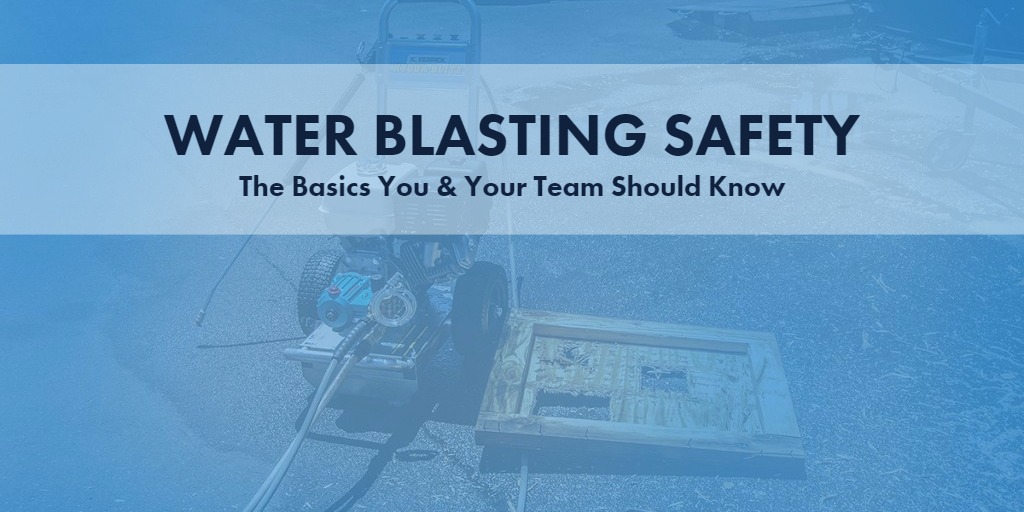WORKING SAFELY WITH HIGH PRESSURE WATER BLASTERS AND JETTERS
Water jetting at the best of times creates slippery, wet conditions that can make it difficult for operators to maintain control over equipment. A simple loss of balance or footing can result in accidents with equipment operating at extreme pressures with up to 80 pounds of thrust. A passing swipe of a high pressure water jet stream across any part of an operator's body can cause serious injury. High Pressure Injection Injuries, also common in the industry, are extremely serious and have life and limb threatening potential.
Kerrick has teamed up with TST Sweden to bring to New Zealand a range of comfortable and practical high pressure safety clothing. This line of safety gear has been developed in Sweden for use across multiple industries for everything from equipment wash downs and commercial property maintenance, to hydro-excavation, surface preparation and hydraulic fluid maintenance work.
Kerrick recommends putting protective protocols in place before the risks become a reality, particularly given the recent shake up in New Zealand’s health and safety laws. TST have researched the industry and injury case histories extensively and developed four fundamental questions that Project Managers and Water Blaster Operators should consider before starting any work:
Why Use Water Jetting PPE? There is a worldwide misconception that when working at low pressures operators are safe. Did you know that the eyes are already at risk at a pressure of only 7 bar (101 psi) and skin penetration can occur at pressures as low as 80 bar (1,160 psi)?
You should also be aware that severe infections are common and the rate of amputation is significantly higher for people injured by high pressure water jets, than for people with similar sized injuries in other industries.
When Should You Use Water Jetting PPE? Accidents aren’t planned, hoses break, couplings fail and people slip, it’s the nature of the industry. High pressure water jet strikes to the backs of bystanders are also surprisingly common. If you will be operating high pressure water jetting equipment or working in the vicinity of high or ultra high pressure water jetting, then PPE needs to be worn. Protect yourself and protect your staff from unnecessary danger.
How Can I Help Prevent Water Jetting Accidents? Knowledge is key! KNOW the risks involved; KNOW your staff are properly trained to carry out high pressure work; Make sure staff on site KNOW what the safety plan is and; Make sure personnel KNOW what areas are cordoned off ‘No Go’ zones while cleaning work is being carried out.
Inspect equipment before each and every use. Worn hose, leaking couplings or malfunctioning safety devices should be fixed or replaced before work begins.
Wear the appropriate safety clothing for the task. Ensure that this clothing is certified and approved for the work you intend to use it for.
Where possible use automation such as StoneAge’s AutoBox ABX-500 Hose Handling System. Removing people from the tools is admittedly more costly, but it dramatically reduces the risk of injury.
If Someone Gets Hurt, What Do We Do? If the skin is penetrated, seek IMMEDIATE medical attention! High pressure water jet injuries should be considered surgical emergencies. An index of suspicion of associated internal injuries and aggressive surgical intervention are required. The risk of infection is extremely high as often a large amount of contaminated water is forced at pressure into the body. While the injury may only appear to be a small insignificant looking cut, the actual water jet injury could extend internally for several feet. Meaning a much larger area needs to be cleaned and treated than what initially meets the eye.
Make sure all staff have a medical card on hand, explaining the nature of potential injuries and the prescribed treatment methods. Many people in the medical industry are unfamiliar with the risks involved with water jetting injuries, providing medical staff with the relevant information they need upfront allows them to react appropriately and treat wounds effectively.
Kerrick takes Health and Safety very seriously which is why we carry PPE to suit various operator needs and pressure ratings. We carry clothing ideal for pressure cleaning work ranging from 0 bar to 500 bar, as well as a range of clothing that caters to ultra high pressures of up to 3000 bar. Products are made with Dyneema which is the world’s strongest fibre it’s 15x stronger than steel on a weight for weight basis, allowing it to offer high levels of protection from water jetting hazards. This material is thinner and more flexible than traditional materials like leather, cotton and metals, making it very comfortable to wear.
The water jetting PPE Kerrick carries is not only designed to keep operators safe, it’s also certified, so you can have peace of mind that the precautions you're taking to mitigate risks are up to industry standard. Better yet, when safety gear is comfortable and easy to wear operators are more likely to use it, which means they’re exposed to less risk of life threatening injuries.
Kerrick’s most popular range of ProOperator water jetting PPE is rated to 500 bar (7,500 psi) and includes gloves, boots, and apron as well as grey or hi-vis trousers, jacket and overalls. All of these products are comfortable, waterproof and dirt repellent. Kerrick also carries PPE for ultra high pressure water jetting work. For more information on this line of products contact Kerrick on 0800 253 774 or get in touch with our team.
VIEW AN EASY TO UNDERSTAND SUMMARY OF THIS ARTICLE BY CLICKING ON THE IMAGE BELOW:
